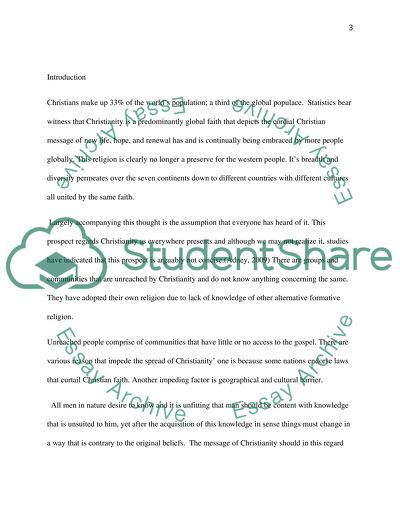Cite this document
(“UNREACHED PEOPLE GROUP PROJECT Research Paper Example | Topics and Well Written Essays - 3750 words”, n.d.)
Retrieved from https://studentshare.org/religion-and-theology/1616769-unreached-people-group-project
Retrieved from https://studentshare.org/religion-and-theology/1616769-unreached-people-group-project
(UNREACHED PEOPLE GROUP PROJECT Research Paper Example | Topics and Well Written Essays - 3750 Words)
https://studentshare.org/religion-and-theology/1616769-unreached-people-group-project.
https://studentshare.org/religion-and-theology/1616769-unreached-people-group-project.
“UNREACHED PEOPLE GROUP PROJECT Research Paper Example | Topics and Well Written Essays - 3750 Words”, n.d. https://studentshare.org/religion-and-theology/1616769-unreached-people-group-project.


